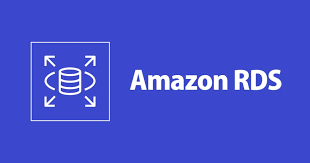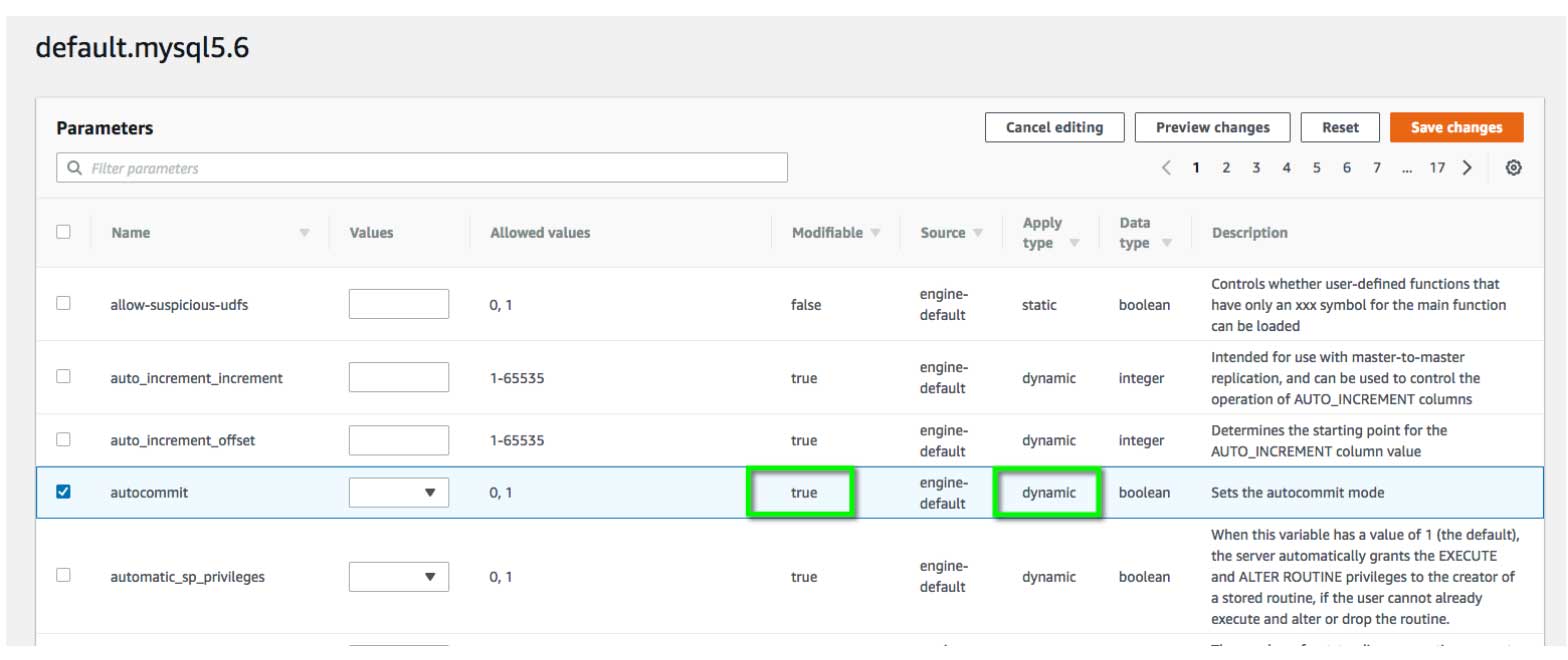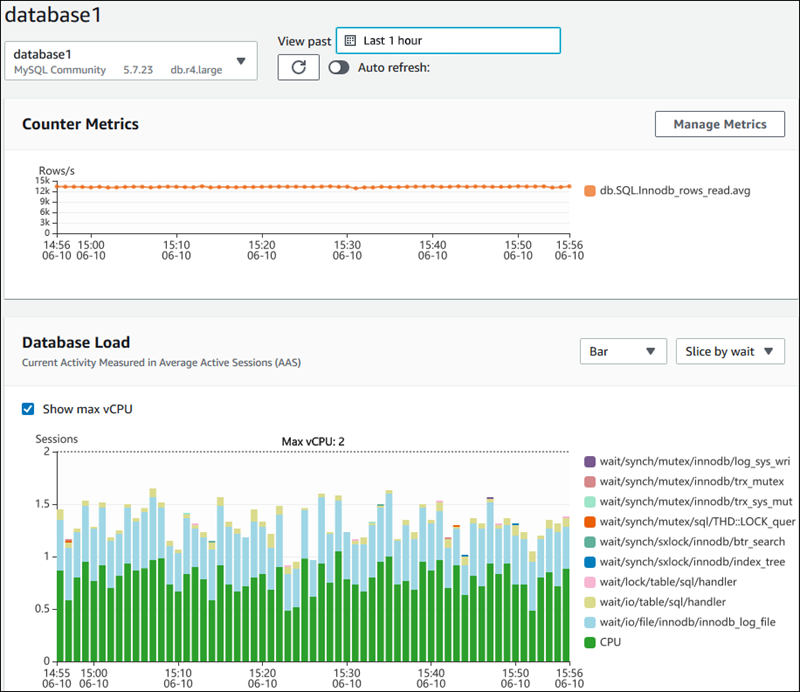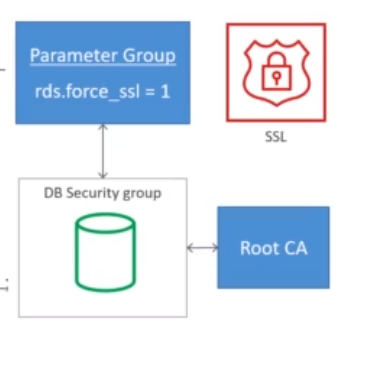Mastering Amazon RDS: A Comprehensive Guide 🌐💡
 Venkata Pavan Vishnu Rachapudi
Venkata Pavan Vishnu RachapudiTable of contents
- 1. Introduction to Amazon RDS 💼
- 2. Key RDS Use Cases 🛠️
- 3. Fine-Tuning with RDS Parameter Groups ⚙️
- 4. RDS Read Replicas for Scalability 🔁
- 5. Enhancing Availability with Multi-AZ Deployments 📊
- 6. RDS Performance Insights and Monitoring 📈
- 7. Working with RDS Snapshots 📸
- 8. Cross-Region Snapshot Recovery for Disaster Recovery 🌍
- 9. RDS Custom for Tailored Database Solutions 🔧
- 10. Scaling RDS Instances Up and Down 📉📈
- 11. Network Security with RDS Subnet Groups 🔒
- 12.Amazon RDS Proxy: Use Cases 🔑
- 13. Database Security with Encryption and Access Controls 🛡️
- 14. Advanced Features: Automated Maintenance, Backtrack, and Aurora Serverless ⏳
- 15. RDS Database Flavors: Choosing the Right Engine 🍴
- 16. Best Practices and Optimizations for RDS 📊
- Conclusion

Amazon RDS (Relational Database Service) is Amazon Web Services' fully managed relational database solution. It simplifies the process of setting up, operating, and scaling relational databases in the cloud, providing both developers and database administrators a robust platform to deploy databases efficiently. This guide aims to provide an in-depth look into Amazon RDS, covering advanced scenarios and additional features. 🚀
1. Introduction to Amazon RDS 💼
Amazon RDS (Relational Database Service) is a powerful, fully managed cloud database service designed to simplify the complexities of setting up, managing, and scaling relational databases. With Amazon RDS, users can leverage high-performance, scalable, and secure databases without the need for manual intervention on tasks like hardware provisioning, database setup, patching, backups, and scaling. 🎯
Whether you're managing a small application or scaling up to handle millions of users, Amazon RDS offers the tools necessary to streamline your database management. By offloading administrative tasks to AWS, you free up your time to focus on building and improving your applications.
Key Features:
Fully Managed Service: Amazon RDS automates routine database management tasks such as backups, patching, and monitoring. This reduces the burden on database administrators, allowing them to focus on more strategic aspects of application development.
Multiple Database Engines: RDS supports several popular relational database engines, including MySQL, PostgreSQL, MariaDB, Oracle, SQL Server, and Amazon Aurora. This flexibility enables you to choose the best engine for your application's needs while ensuring compatibility with existing tools.
High Availability & Reliability: With Multi-AZ (Availability Zone) deployments, Amazon RDS ensures that your database remains operational even in the event of a failure in a single AZ. Automated failover between the primary and standby instances ensures minimal downtime, which is crucial for business-critical applications.
Security: Security is built into the core of Amazon RDS. Features such as encryption at rest and in transit, IAM (Identity and Access Management) integration, VPC isolation, and SSL/TLS support help protect your sensitive data. RDS integrates seamlessly with AWS Key Management Service (KMS) for managing encryption keys, and data access can be tightly controlled through security groups and IAM roles.
Scalability: Amazon RDS allows you to easily scale your database resources to meet the demands of your application. You can scale vertically by upgrading the instance size or horizontally by adding read replicas for distributing read traffic, ensuring your application handles increased load efficiently. Additionally, Aurora Serverless allows for automatic scaling based on actual workload requirements, providing a more cost-effective option for variable workloads.
2. Key RDS Use Cases 🛠️
Amazon RDS can be deployed for various scenarios:
Transactional Databases: Manage business-critical applications with high IOPS. 💳
Analytics and Reporting: Use Read Replicas for offloading heavy reporting queries. 📊
E-Commerce Platforms: Scale with traffic spikes using Aurora's high performance. 🛍️
Web Applications: Support content-driven websites requiring high uptime. 🌍
Specialized Workloads:
Hybrid Environments: Use RDS with AWS Direct Connect for low-latency hybrid setups. 🌐
Data Warehousing: Consider Aurora or PostgreSQL for large data analysis workloads. 📦
Mobile and Gaming Apps: Utilize Multi-AZ for high availability and low latency. 🎮
3. Fine-Tuning with RDS Parameter Groups ⚙️

Parameter Groups allow you to modify database engine parameters to suit your workload requirements. They act as a configuration container for database instances, controlling memory usage, connection limits, timeout settings, and more.
Best Practices:
Custom Parameter Groups:
Always create custom parameter groups rather than modifying the default ones. This approach ensures that your changes are applied consistently and provides more flexibility to manage settings without affecting other databases or applications using the default parameter group. You can modify the custom parameter group as needed without risking changes to system-wide defaults.Example:
Suppose you have a MySQL instance, and you need to increase theinnodb_buffer_pool_sizeto improve the performance of large database queries. Rather than changing the default parameter group, you create a custom parameter group, modify theinnodb_buffer_pool_sizevalue, and then associate it with your RDS instance. This ensures that the change is applied specifically to your instance and can be reverted if needed.Performance Optimization:
Tuning parameters based on your application’s specific needs is key to achieving optimal performance. For example, if your application performs a lot of complex queries or has high transaction rates, increasing the size of memory buffers or adjusting connection limits can help.Example:
For a PostgreSQL instance, you might need to increase thework_memsetting to allow more memory for sorting and joining large datasets. If your queries frequently involve large sorts, this change will help improve performance by preventing disk-based sorting. You would modify thework_memparameter in your custom parameter group to better support these operations.Monitoring and Adjustments:
Use Amazon CloudWatch to monitor database metrics such as CPU utilization, memory usage, disk I/O, and query performance. By identifying performance bottlenecks, you can adjust relevant parameters to mitigate issues.Example:
After reviewing your CloudWatch metrics, you may find that thecpu_utilizationis high, and query response times are slowing down due to too many concurrent connections. In this case, you can adjust themax_connectionsparameter in your custom parameter group to limit the number of simultaneous connections, thus reducing CPU load. Additionally, you might increase theinnodb_log_buffer_sizefor more efficient handling of large transactions.
4. RDS Read Replicas for Scalability 🔁

Amazon RDS Read Replicas allow you to offload read traffic from your primary database by creating one or more replicas that asynchronously replicate data. These replicas can be used to handle read-heavy workloads, improving the scalability and performance of applications. Read replicas are useful for enhancing the performance of reporting, analytics, and other read-intensive operations, while the primary database can focus on write operations. You can also promote a read replica to a standalone database instance if needed
Advanced Scenarios:
Cross-Region Replication: Deploy read replicas in different regions to improve global latency. 🌍
Failover: Promote a Read Replica to a standalone instance if the primary database fails.
Load Balancing: Use Route 53 DNS to distribute read traffic across multiple replicas. 🔄
Tips:
Monitor replication lag via CloudWatch metrics.
Use Read Replicas for database migrations with minimal downtime.
5. Enhancing Availability with Multi-AZ Deployments 📊

Multi-AZ deployments improve database availability by providing automatic failover to a standby instance in another Availability Zone. It's designed for critical workloads requiring high uptime.
Advanced Configurations:
Multi-AZ + Read Replicas: Combine Multi-AZ for write operations with Read Replicas for reads.
Maintenance: RDS handles automatic failover during maintenance to reduce downtime.
Automatic Backups: Backups are taken from the standby instance, avoiding performance impact on the primary. ⏳
Best Practices:
Enable Multi-AZ for production workloads.
Use Multi-AZ to ensure availability during maintenance windows.
6. RDS Performance Insights and Monitoring 📈

Performance Insights is a monitoring tool that provides easy-to-understand visualizations of your database load. It's essential for identifying bottlenecks and performance optimization.
Advanced Features:
Top SQL Analysis: View the most resource-consuming queries to optimize database performance. 🏎️
Custom Metrics: Integrate with CloudWatch for detailed metrics and alerts.
Data Retention: Increase the retention period for historical data analysis (up to 2 years). 📆
Monitoring Tips:
Enable Enhanced Monitoring for more detailed instance metrics.
Set up CloudWatch Alarms for threshold-based alerts.
7. Working with RDS Snapshots 📸
Snapshots capture the state of your database at a specific point in time. They are essential for data recovery, cloning, and backup strategies.
Types of Snapshots:
Automated Backups: Configurable through the AWS Console for automatic scheduling.
Manual Snapshots: User-triggered for specific backup needs.
Snapshot Automation:
Use AWS Backup for centralized backup management.
Automate snapshot retention and deletion policies using Lambda. 🔄
8. Cross-Region Snapshot Recovery for Disaster Recovery 🌍
RDS supports copying snapshots across regions, an excellent feature for disaster recovery and compliance.
Steps to Enable:
Copy Snapshot: Choose the snapshot and select the target region.
Restore Instance: Use the copied snapshot to spin up a new instance. 🔄
Disaster Recovery Best Practices:
Schedule regular cross-region snapshot copies.
Use automated scripts with AWS CLI or SDKs to manage snapshot transfers.
Test recovery scenarios to ensure data integrity. ✔️
9. RDS Custom for Tailored Database Solutions 🔧

RDS Custom offers greater flexibility for customers who require more control over their database settings, configurations, or underlying infrastructure. This service is ideal for legacy applications, specialized configurations, or complex use cases that cannot be addressed by standard RDS offerings. It allows access to the underlying operating system, enabling customizations like specific OS-level configurations, non-standard software, or unique storage needs.
Key Features:
Custom Database Configuration: Fine-tune settings and install additional software packages.
Control Over Patching: Choose when to apply patches and updates to meet application requirements.
Access to Operating System: Shell access to the EC2 instance hosting the database for custom configurations.
Third-party Tool Integration: Easily integrate with monitoring tools like Datadog, Prometheus, or custom solutions for deep insights.
10. Scaling RDS Instances Up and Down 📉📈

RDS provides seamless scaling options for adjusting your database's capacity. Scale vertically by changing instance sizes or horizontally with Aurora's serverless options.
Instance Resizing:
Vertical Scaling: Modify the instance class based on workload requirements.
Horizontal Scaling: Use Read Replicas for distributed scaling.
Aurora Serverless: Automatically adjusts capacity based on demand (ideal for variable workloads). ⏩
Best Practices:
Scale during off-peak hours to minimize disruption.
Monitor CPU, memory, and storage metrics to identify when scaling is needed.
11. Network Security with RDS Subnet Groups 🔒
Subnet Groups define the VPC subnets that your Amazon RDS instance can use, ensuring proper network security and availability. By configuring subnet groups, you can control the placement of RDS instances in multiple Availability Zones for fault tolerance and high availability. It helps maintain isolation and minimize latency by strategically selecting subnets within your VPC. 🛡️
Configuration Tips:
Use Private Subnets for enhanced security.
Ensure multiple Availability Zones are included for redundancy.
Monitor subnet IP utilization to avoid connectivity issues. 📡
12.Amazon RDS Proxy: Use Cases 🔑
Amazon RDS Proxy is a fully managed service designed to improve the scalability, availability, and security of your Amazon RDS databases. Here are some key use cases:
Improving Connection Management: RDS Proxy pools and shares database connections, reducing the overhead caused by repeatedly opening and closing connections, thus enhancing application performance. ⚡
Scaling Applications: Ideal for handling unpredictable or high-traffic workloads, RDS Proxy helps to scale read-heavy applications while optimizing database connections. 📊
High Availability: RDS Proxy seamlessly handles failovers in Multi-AZ deployments, ensuring applications remain operational during database outages. 🔄
Secure Credential Management: Integrated with AWS IAM and Secrets Manager, RDS Proxy helps securely manage database credentials, ensuring sensitive data remains protected. 🔐
4o mini
13. Database Security with Encryption and Access Controls 🛡️

Security is a top priority with Amazon RDS, and several features ensure data protection:
Encryption:
At Rest: Enable AWS KMS (Key Management Service) encryption.
In Transit: Use SSL/TLS for encrypted data transmission.
Access Controls:
Use IAM policies for fine-grained permissions.
Implement security groups to control inbound and outbound traffic.
Use AWS Secrets Manager to manage database credentials securely.
14. Advanced Features: Automated Maintenance, Backtrack, and Aurora Serverless ⏳
Automated Maintenance:
Schedule maintenance windows to manage updates and patches.
Utilize Multi-AZ deployments to reduce downtime during maintenance.
Backtrack (Aurora Only):
Roll back your Aurora database to a previous point without restoring from a snapshot.
Useful for undoing mistakes or testing. ⏪
Aurora Serverless:
A scalable, on-demand serverless database engine that automatically adjusts capacity.
Ideal for unpredictable workloads with cost-efficiency.
15. RDS Database Flavors: Choosing the Right Engine 🍴
RDS supports multiple database engines, each suited for different use cases. Select the one best aligned with your workload requirements.
MySQL & MariaDB:
Ideal for web apps, content management systems (e.g., WordPress).
Open-source options with a large community.
PostgreSQL:
Great for analytical workloads and applications requiring advanced data types.
Supports JSONB and other modern features.
SQL Server:
- Use for Microsoft-based enterprise applications.
Oracle:
- Enterprise-grade relational database used for legacy applications.
16. Best Practices and Optimizations for RDS 📊
Performance Tuning:
Use parameter groups for database-specific configurations.
Enable Enhanced Monitoring and Performance Insights.
Security:
Use VPC and security groups to limit access.
Enable encryption for sensitive data.
Cost Optimization:
Use Reserved Instances for long-term workloads.
Implement Auto Scaling or Aurora Serverless for variable workloads.
Conclusion
By following these advanced strategies and understanding the full capabilities of Amazon RDS, you can optimize your database management, improve performance, and enhance security. 🌟 Whether you're scaling a web app or supporting an enterprise workload, RDS provides the tools to ensure success!
Subscribe to my newsletter
Read articles from Venkata Pavan Vishnu Rachapudi directly inside your inbox. Subscribe to the newsletter, and don't miss out.
Written by

Venkata Pavan Vishnu Rachapudi
Venkata Pavan Vishnu Rachapudi
I'm Venkata Pavan Vishnu, a cloud enthusiast with a strong passion for sharing knowledge and exploring the latest in cloud technology. With 3 years of hands-on experience in AWS Cloud, I specialize in leveraging cloud services to deliver practical solutions and insights for real-world scenarios. Whether it's through engaging content, cloud security best practices, or deep dives into storage solutions, I'm dedicated to helping others succeed in the ever-evolving world of cloud computing. Let's connect and explore the cloud together!
